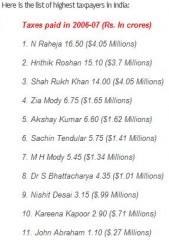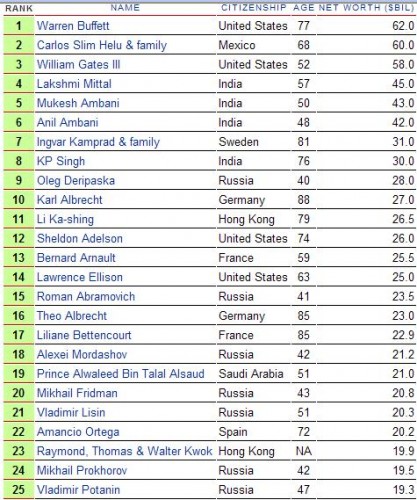samedi, 20 septembre 2008
Pas gloups
Je rencontrai dimanche une amie de Nishtha. Personne âgée, de la famille royale du Kerala, très contente d’avoir plein de servants pour l’aider, dont la mère et le mari ont été soignés dans le meilleur (et plus cher) de Pune, elle m’expliquait que personne ne devrait critiquer un pays où il squatte : si t’aimes pas, tu t’en vas, mais tu critiques pas. Bon d’accord, mais y a de la critique constructive aussi non ? Et sans que j’ai rien dit, elle a ajouté : "il y a beaucoup de choses mauvaises en Inde mais aussi beaucoup de choses merveilleuses. Nous les Indiens avons conscience de nos problèmes mais personne d’autre ne peut critiquer. Et puis c’est vrai qu’on a des pauvres (ah oui ça elle pouvait pas le louper, 1ère page du journal la semaine dernière : ) mais bon, de toute façon, il faut bien des pauvres partout..."
Moi j'aime pas trop parler des pauvres de l'Inde, c'est un sujet qui fâche et puis ai-je vraiment mon mot à dire? Bref je ne ferai que donner les chiffres de la Banque Mondiale parus en Une récemment: Article_TOI_Poverty in India_270808.pdf
L’Inde abrite 1/3 des pauvres du monde entier. Elle a aussi la plus importante proportion de la population mondiale vivant avec moins de 2 dollars par jour. La pauvreté a davantage diminué entre 1981 et 1990 (de 59,8% à 51,3%) qu’entre 1990 et 2005 (de 51.3% à 41,6%). La faute aux réformes économiques de 1991 (parmi lesquelles, je le rappelle, l’ouverture économique) ??
Résultats :
456 millions d’Indiens (soit 42% de la population) vivent en-dessous du seuil de pauvreté international (1,25 dollar par jour).
828 millions d’Indiens (soit 75.6% de la population) vivent avec moins de 2 dollars par jour – « seulement » 72,2% en Afrique Sub-Saharienne.
Mais alors qu’on se rassure, y a des riches aussi, et même des très très riches.
En 2007, le magazine Forbes annonçait une fortune cumulée des 53 milliardaires indiens de 351 milliards de dollars (170 pour 2006). C’est le groupe de 40 le plus riche d’Asia. Trop cool ! La fortune amassée par les milliardaires indiens, estimée à 351 milliards de dollars, représente près de 31% du PIB indien (estimé à 1 089 milliards de dollars pour 2007, données du Fonds Monétaire International). Ce qui leur donne à peu près 3 fois plus de poids dans l’économie que leurs alter-egos aux Etats-Unis, 10 fois plus qu’en Chine, et 4 fois plus que la moyenne. Avec ses 351 milliards, la richesse de ces Indiens représente à peu près 8% de la richesse de tous les milliardaires du monde.
Les 4 plus riches ont d’ailleurs à eux seuls 180 milliards de dollars. Lakshmi Mittal (de nationalité indienne mais non résident), roi de l’acier est numéro 1 avec 51 milliards. Puis Mukesh Ambani, du groupe Reliance (l’entreprise la plus cotée d’Inde) arrive avec 49 milliards ; son petit frère étant sur ses talons avec 45 milliards.
Et voilà comment on se retrouve en 2008 avec 4 Indiens parmi les 10 personnes les plus riches du monde… Le truc chelou c’est qu’apparemment aucun de ces riches Indiens n’apparaît dans la liste des 10 plus gros payeurs d’impôts en Inde. Comment qu’y font ?? Ben on sait pas… (enfin sauf pour Mittal qui vu qu’il est pas résident en Inde paye ses impôts en Angleterre). Enfin c’est quand même fou que dans la liste des plus gros taxés, il n’y ait que des stars de Bollywood et du cricket !


Sources :
http://trak.in/tags/business/2007/04/28/who-are-the-highest-taxpayers-in-india-and-how-much/
http://www.forbes.com/lists/2008/10/billionaires08_The-Worlds-Billionaires_Rank.html
http://www.forbes.com/2007/11/13/biz_07india_all_slide_2.html
14:07 Publié dans IncredIble India | Lien permanent | Commentaires (0) | Tags : inde, pauvreté, pauvre, riches, impôts, milliardaires |  Imprimer |
Imprimer | ![]() Facebook |
Facebook |
vendredi, 19 septembre 2008
Learning Hindi, by Sarah MacDonald
Voici un extrait de Holy Cow qui m'a fait pleurer de rire - bon Ok faut peut-être être dans le bain mais vous avouerez que c'est quand même rigolo!
I now decide to arm myself with language. India was hundred of languages, but Hindi is the common tongue in Delhi. The ABC office finds me a teacher and he arrives bowing low.
Hari Lal (whose name means ‘green red’) is tiny, balding and has shiny skin the colour of warm walnut. Softly, sweetly and firmly, he tells me that he’s one of the few people in Delhi who speaks proper Hindi and he’s glad to be of assistance. His first insistence is that I attach a ji to everybody’s name as this is a term of high respect and means ‘soul one’. Hari Lal tells me the Hindi hello, namaste ji, means ‘I recognize the divine in you’. It’s a lovely sentiment I’m happy to adopt. But Hari’s Hindi is more practical than spiritual. It’s memsahib Hindi; the language of the lady of the manor. I repeat after him:
‘Clean the table.’
‘Make Indian dinner tonight as we are holding a reception.’
‘Please send this telegraph to London.”
‘Go call sahib.”
And my favorite: Agar magar mudt kidjeaye – ‘No ifs and buts please.’
Jonathan and I lay a bet on who will use it first.
But as I haltingly begin to use the phrases, Rachel laughs, Abraham startles, taxi drivers stare at me and the local beggars retreat in shock. I ask the ABC office researcher – a young funky woman called Simi – what I’m doing wrong and try out a few sentences on her. She tries to stop herself laughing but her eyes twinkle and her shoulders shake.
‘Sarah, the thing is this. Harry Lal is teaching you formal Hindi and Urdu, no-one speaks it here. You should speak Hindustani. You are being too polite.’
I feel like an idiot. I’ve been talking a language that died out with the British Raj. When I thought I was asking a taxi driver to take me somewhere I was really saying, ‘Kind sir, would thou mind perhaps taking me on a journey to this shop and I’d be offering you recompense of this many rupees to do so, thank you frightfully humbly.’ And I’ve been greeting filthy naked street urchins with, ‘Excuse me, o soul one, but I’m dreadfully sorry, I don’t appear to have any change, my most humble of apologies.’
I carefully and respectfully suggest to Hari Lal-ji that perhaps I could learn the informal way of talking and perhaps some street Hindi.
His cup of chai clatters into the saucer, he pulls himself up to his full height of four feet ten and sharply and sternly states, ‘Madam, please, these people of Delhi are uneducated and rude, we will not speak like filth, we shall speak properly, as befitting your station, I will not talk like that, I absolutely refuse.’
There begins a battle of wills that keeps me from communicating with the locals for months to come.
When I ask him how to tell a taxi driver he’s ripping me off, he suggests a phrase that translates as: ‘Is your taxi made of gold, dear man?’
When I want to tell a man to stop staring at me, he suggests: ‘Haven’t you a mother or sister at home?’
And when I ask what I should have said to the man in the visa office, he suggests: ‘You are making my moustache droop.’
‘But, Hari-ji, I protest, I don’t have a moustache.’
‘No, madam, but it means “you are threatening my honour”, moustaches must always twirl upwards.’
13:05 Publié dans IncredIble India | Lien permanent | Commentaires (1) | Tags : inde, extrait de lecture, holy cow, sarah macdonald, learning hindi |  Imprimer |
Imprimer | ![]() Facebook |
Facebook |
jeudi, 18 septembre 2008
Le Chinglish c'est trop marrant
Dans un article récent (Article_TOI_Why Hinglish will beat Chinglish_310808.pdf,) une journaliste, qui simplifiait un peu en faisant de tous les Indiens les héritiers du sanscrit mais passons, expliquait pourquoi l’Inde ne se ferait pas voler par la Chine son titre incontesté de leader mondial des call centers (trop bien!).
Et c’est parce que les Indiens parlent mieux anglais que les Chinois. Et c’est quand même bien vrai. Même si ils se sont approprié l’anglais à leur manière (voir notamment a l’Hinglish, simple mixte anglais-hindi (bien pratique pour comprendre les Bollywoods)). Beaucoup d’Indiens ne parlent pas un anglais de qualité parce qu’ils traduisent instinctivement leurs phrases en Anglais, ce qui est souvent rigolo. Comme lorsque je traduis littéralement des expressions françaises pour Shiv, du genre « you give me the hand, I want the arm »…
Mais il paraît que c’est encore plus rigolo en Chinois ! Voilà par exemple des panneaux que l’on peut trouver en Chine, devant les toilettes :
- Go Into the Toilet Beard Know
- The service object of this toilet is limited by a person only.
- The toilet provides only into the toilet place, the dissatisfied foot goes into the toilet to have a bowel movement outside of other request.
- The one who go into toilet want to take good care of toilet facilities, strictlying forbid to move this toilet tool to did it touse.
- Go into the toilet beard to place excrement the tool is intestablishment inside, cannot spread to leak.
- The one who go into toilet cannot clamour loudly. The in order to prevent make other go into toilet is frighten.
- Go into toilet and cannot will boil to make food to take isedible into this toilet, the in order to prevent break good go into toilenvironment.
- Can not move bowels in the urine the pond.
- Please read this beard to know hard into the toilet and act according to carry on.
Et voici d’autres exemples, du site engrish.com.
- Sign at a counter of China Eastern Airlines. Check in animals and alcoholics, passengers may carry 2 bottles wine.
- Sign in a garden. Little grass is having rest, don’t disturb them.
- Sign in a garage. If you are stolen, call the police at once.
- Sign at a river. Take the child, fall into water carefully.
- Space for rent: Please inform office if you are interesting.
- Sign at a cliff. Be careful the safe. No jumping.
- Sign at river. Take care to fall into water.
- Sign at a clothes shop. Kids swear.
- Sign on a wall. Dying right here is strictly prohibited.
- Sign in East China Hotel, regarding stoppage of water in taps. We are awfully sorry for the convenience to you. Thank you for your uncooperation.
- Sign at cliff: Care for life, do not fun.
- Sign near a low roof. Bump the head care sully
- Sign at a railway platform. Please don’t cross any railings lest suddenness happens.
- Sign at an airport. Pregnant woman over 70 and disabled people lounge.
- Sign at a hotel. Please present your voucher before breakfart.
Some signboards have inadvertent sexual connotations:
- Poster for body cream: Whitening peeling cream, removes horniness.
- Sign at a pond. Please do not feed the fish with your privates.
- Poster outside a shop. Pleasanty surprise of groping.
- Sign in a store. May your satisfaction sincerely aroused by me.
- Piano teaching manual. Piano Teachers’ Intercourse Book.
- Sign at a park. No kicking of balls.
- Sign in a store. Please don’t touch yourself. Let us help you try out.
- Sign in a department store. Rear-service Department.

